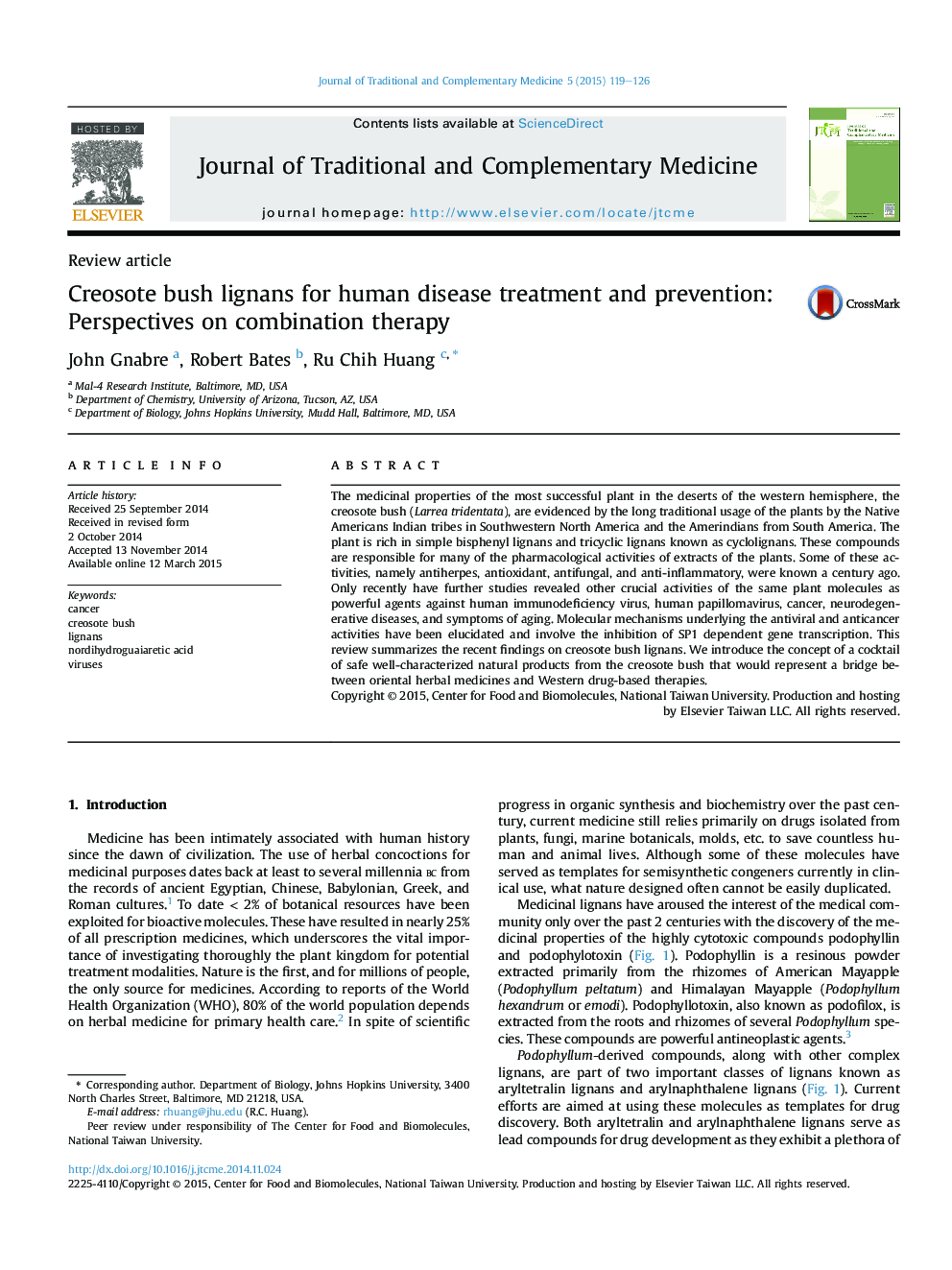| Article ID | Journal | Published Year | Pages | File Type |
|---|---|---|---|---|
| 3099756 | Journal of Traditional and Complementary Medicine | 2015 | 8 Pages |
The medicinal properties of the most successful plant in the deserts of the western hemisphere, the creosote bush (Larrea tridentata), are evidenced by the long traditional usage of the plants by the Native Americans Indian tribes in Southwestern North America and the Amerindians from South America. The plant is rich in simple bisphenyl lignans and tricyclic lignans known as cyclolignans. These compounds are responsible for many of the pharmacological activities of extracts of the plants. Some of these activities, namely antiherpes, antioxidant, antifungal, and anti-inflammatory, were known a century ago. Only recently have further studies revealed other crucial activities of the same plant molecules as powerful agents against human immunodeficiency virus, human papillomavirus, cancer, neurodegenerative diseases, and symptoms of aging. Molecular mechanisms underlying the antiviral and anticancer activities have been elucidated and involve the inhibition of SP1 dependent gene transcription. This review summarizes the recent findings on creosote bush lignans. We introduce the concept of a cocktail of safe well-characterized natural products from the creosote bush that would represent a bridge between oriental herbal medicines and Western drug-based therapies.
Graphical abstractFigure optionsDownload full-size imageDownload as PowerPoint slide
